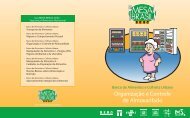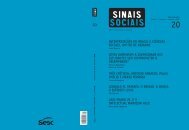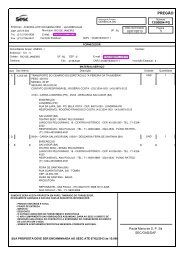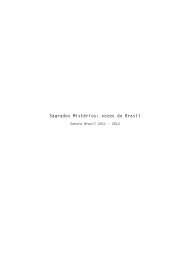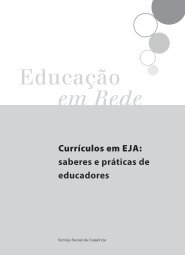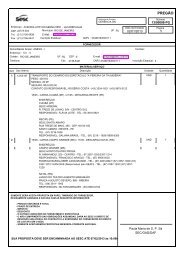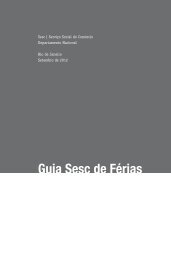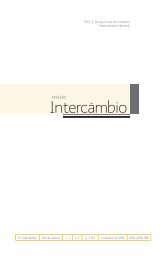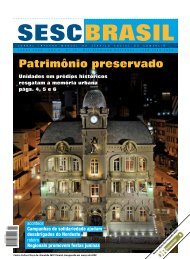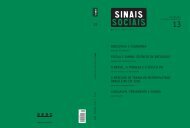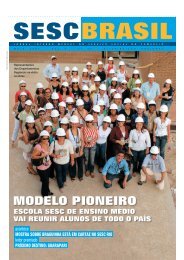Revista Sinais Sociais N16 pdf - Sesc
Revista Sinais Sociais N16 pdf - Sesc
Revista Sinais Sociais N16 pdf - Sesc
Create successful ePaper yourself
Turn your PDF publications into a flip-book with our unique Google optimized e-Paper software.
Os objetivos do presente estudo foram: a) explicitar as construções imaginárias<br />
que norteiam as práticas cotidianas dos projetos sociais de dança no Rio de Janeiro;<br />
e b) identificar como se manifestam as relações entre o ensino da arte e a<br />
formação para a cidadania na estrutura formal e no desenrolar cotidiano desses<br />
projetos. Para tanto, utilizou-se uma trilha metodológica composta pela análise<br />
do discurso, conforme a concepção desenvolvida por Eni P. Orlandi (1988;<br />
1993; 1996), e pelos estudos de etnometodologia, apresentados por Coulon<br />
(1995). As observações de campo se realizaram em dois projetos sociais e envolveram<br />
diferentes aspectos que ultrapassavam a dimensão da dança, mas que<br />
são indissociáveis da produção de sentido gerada por essa prática. Características<br />
abrangentes do projeto, como localização, condições materiais, origem<br />
e formação dos profissionais, se juntaram a detalhes como vestuário, murais,<br />
gírias, corte de cabelo, enfim, indícios que denotam o imaginário do projeto e<br />
as formas como os alunos expressam sua adesão e identificação com diferentes<br />
vivências da dança. Na investigação perceberam-se outros significados para os<br />
projetos, tais como heterogeneidade, identidade, divertimento, deslocamento<br />
de sentidos nas relações entre ócio e trabalho, casa e rua, desilusão, imbricações<br />
com o patrocínio e os vários interesses em jogo, preconceitos, segregação.<br />
Palavras-chave: favela, projetos sociais de dança, imaginário social<br />
The present study’s objective was to: a) explain the imaginary constructions that<br />
guide the daily practices of the dance social projects in Rio de Janeiro; and b)<br />
identify how the relationships between the art teaching and the establishment<br />
of the citizenship in the formal structure and in the daily development of these<br />
projects are manifested. For this purpose, a methodology was applied combining<br />
the speech analysis technique according to the concept developed by Eni<br />
P. Orlandi (1988, 1993, 1996) and the ethno-methodology studies presented<br />
by Coulon (1995). The field observations occurred in two social projects and<br />
involved different aspects that surpassed the dance realm but are inseparable<br />
from the production of meaning generated by all this practice. The project’s<br />
comprehensive features such as location, material conditions, origin, and professional<br />
training mingled with details like clothing, murals, slangs, hairstyles, in<br />
short, signals that suggest the project’s image and the ways how these students<br />
express their connection to and identification with different dance experiences.<br />
This investigation brought up other significances for the projects such as: heterogeneity,<br />
identity, recreation, displacement of meanings in the relationships<br />
between leisure and work, home and street, disappointment, imbrications with<br />
sponsorship and the various interests at stake, prejudice and segregation.<br />
Keywords: slum, dance social projects, social image<br />
SINAIS SOCIAIS | RIO DE JANEIRO | v.5 nº16 | p. 108-141 | MAIO > AGOSTO 2011<br />
109



